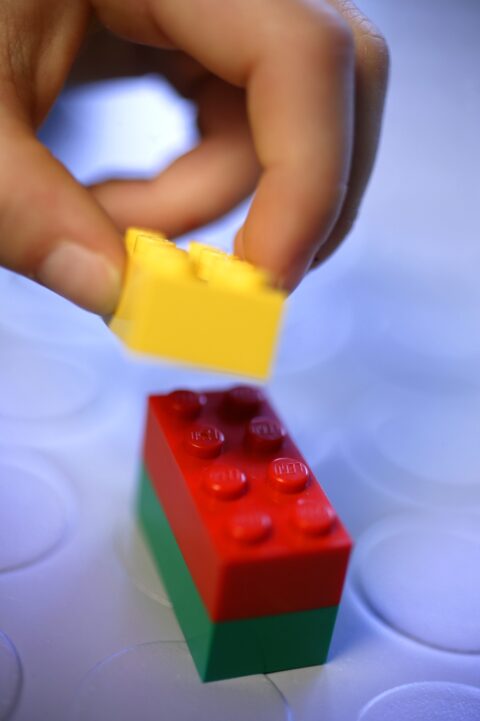
Lego Steine © Niels Åge Skovbo, FOKUS
We would like to add a very recent example that fits to our previous blog post about best practices in PR storytelling: In April, all the important German print media reported on LEGO – cover story in Capital, two-page report in the SZ magazine, a story in Stern, Spiegel etc. All articles praise the economic revival of LEGO to becoming the second largest toy manufacturer worldwide under the aegis of its CEO Jørgen Vig Knudstorp. Just as a reminder: in 2004, the Danish company was close to bankruptcy and 1,000 jobs were lost. After the triumphant turnaround, journalists are commending LEGO’s successful market strategy, which is based on the ageless, positive identification and the fun of playing with the plastic bricks.
The LEGO story isn’t new and, as the Wirtschaftswoche notes in a very good analysis, it has been told again and again for the past two years. The reason for the numerous references in April is the first LEGO movie, which is currently showing in our cinemas with huge success. This doesn’t diminish PR performance. On the contrary, it proves that the company knows which building blocks make up a good story.
Good storytelling appeals to our subconscious mind, because it follows traditional narrative patterns that we recognise automatically and immediately identify with. And that’s what has been making LEGO so good over the years. The LEGO company story has something of the hero’s journey and the revival. In the hero’s journey, the protagonist goes on an adventure and either accomplishes his mission or faces a tragic end. The heroes are the LEGO bricks and the LEO figures, with which we, the players, can have adventures and embark on fantastical journeys. The Star Wars figures, for instance (back in the day we had firefighter and police figures) provide a large pool of ideas to reenact the human range of good versus evil. But even the simple building of towers and houses satisfies the archaic desire to create something with our own hands. This part of the storytelling is the prehistory of LEGO, which works for people worldwide regardless what generation they’re from. Moreover, they’re smart in how they retell this story, for example in the current movie. The second strand of the company story, which the PR managers orchestrate extremely well, is the description of the path toward economic success – the “revival” (or ‘rebirth’) of LEGO. The hero, CEO Knudstorp, steered LEGO out of the shadows, thanks to an intelligent market strategy and product politics (Star Wars licenses), to become the second largest toy maker in the world. The public longs for these stories: Everybody loves stories in which the underdog achieves the impossible, to bring hope to a hopeless situation.
LEGO is no longer just a manufacturer of plastic bricks, but also a media company. It runs several Youtube channels, a very successful Facebook page, develops numerous games and now it has its own movie. All channels tells the same story: LEGO players are heroes! The mix of user generated content and their own company story reproduced on all available platforms, makes LEGO a textbook example for good PR and great storytelling.
All our storytelling articles (published so far):
Storytelling I: What’s the Story?
Storytelling II: Why it Works
Storytelling III: Where Does One Begin?
Storytelling IV: Best Practices Google Nexus
Storytelling V: Storytelling With Style
Storytelling Best Practices: